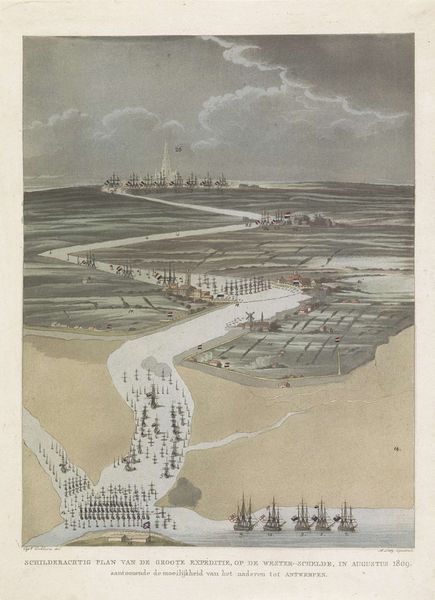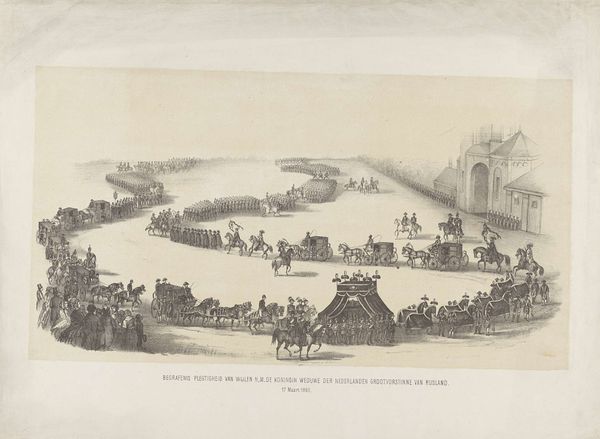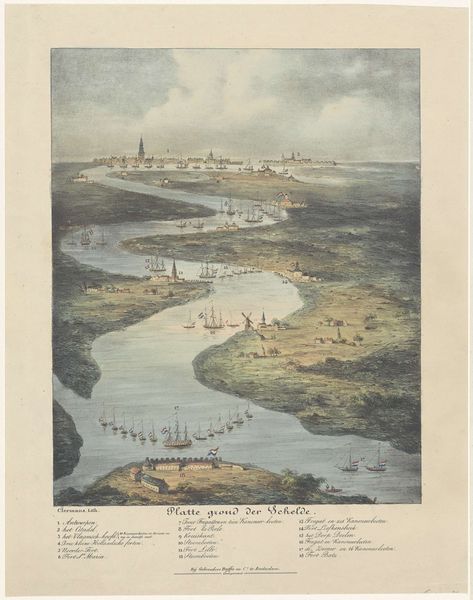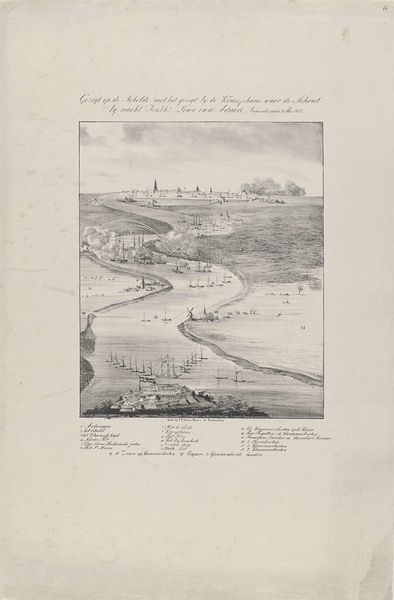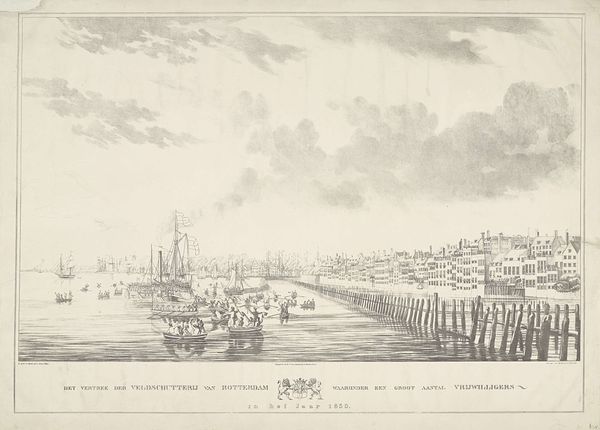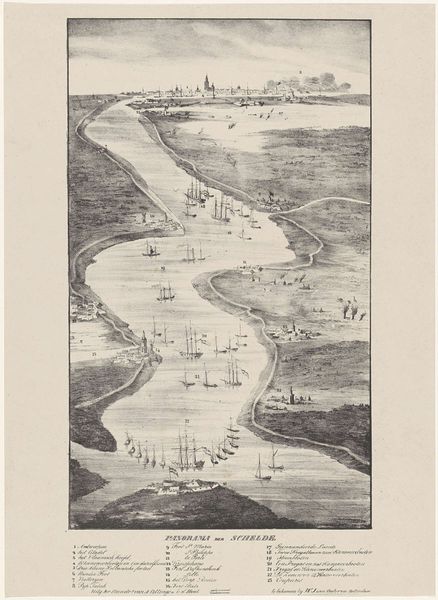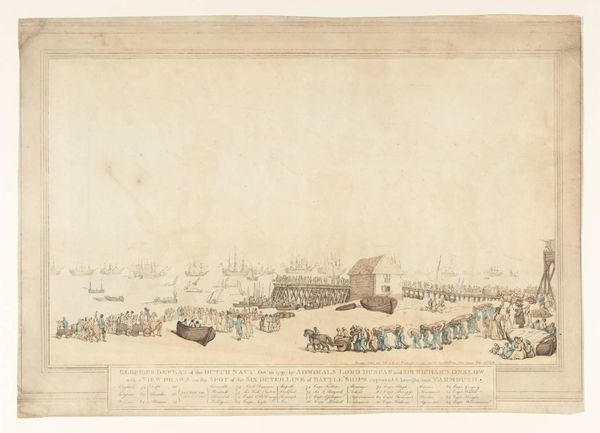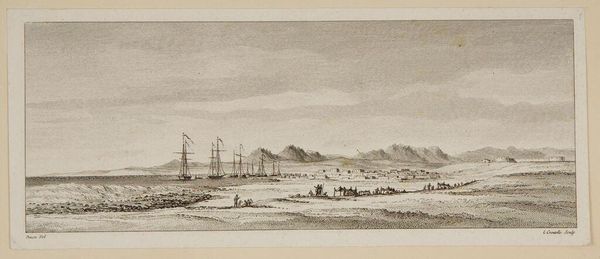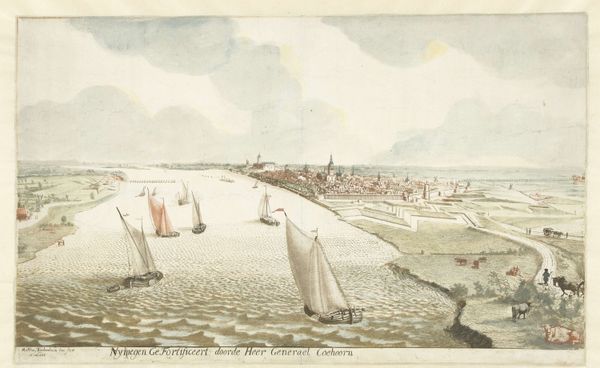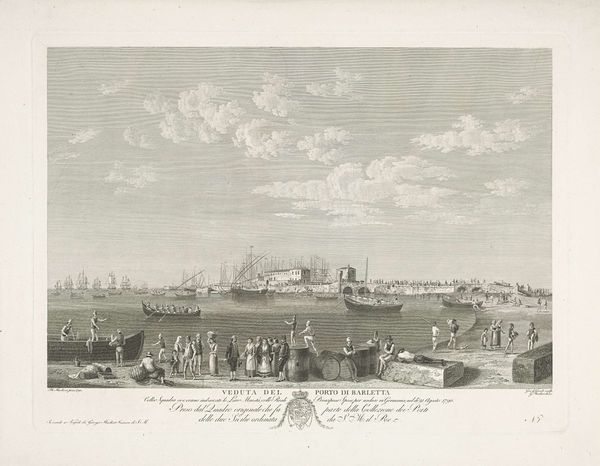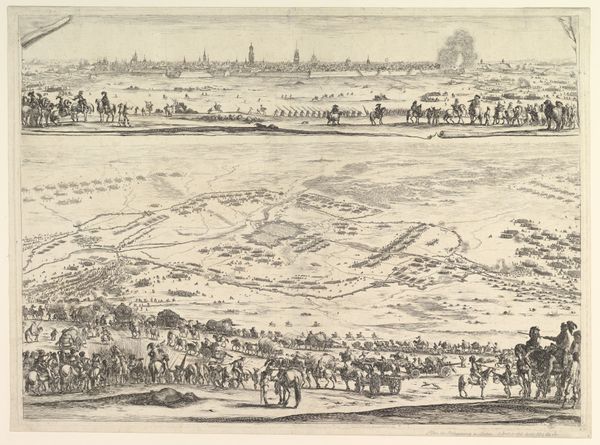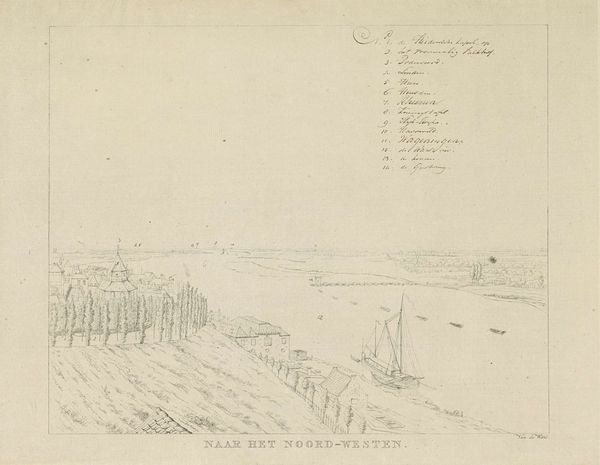
Gezicht in vogelvlucht op de Westerschelde met Engelse, Hollandse en Franse vloten, 1809 1809 - 1822
0:00
0:00
print, watercolor
#
16_19th-century
# print
#
landscape
#
watercolor
#
romanticism
#
orientalism
#
cityscape
#
history-painting
#
watercolor
Dimensions: height 305 mm, width 219 mm
Copyright: Rijks Museum: Open Domain
Curator: So, here we have "Gezicht in vogelvlucht op de Westerschelde met Engelse, Hollandse en Franse vloten, 1809" a watercolor print by A. Lutz created sometime between 1809 and 1822. It’s quite the scene, isn't it? Editor: It is! I’m struck by the almost diagrammatic quality of the image. All those little ships meticulously arranged... what exactly are we looking at here? Curator: More than just a picture, this print is a political document reflecting the turmoil of the Napoleonic Wars and its effect on Dutch territories. What narrative do you think the artist constructs by emphasizing the presence of these English, Dutch, and French fleets together in this detailed, almost sterile composition? Editor: Hmm, it almost feels like a…standoff? I mean, the ships are close, but they aren’t actually fighting. Is it meant to be a show of force, perhaps a commentary on the shifting power dynamics of the time? Curator: Exactly! Think about it: The Netherlands were in a complicated position, being tossed between French occupation and aspirations for independence. How does seeing the scene depicted as a calm survey change your understanding of maritime power and colonial competition? It prompts us to investigate further who benefited and who was oppressed by such grand naval operations. Editor: I see what you mean! It’s not just about the battle itself, but the broader implications of maritime dominance and who gets to control these waterways. And framing it in such an ‘orderly’ manner, almost sanitizing the conflict... Curator: Precisely. It’s easy to get caught up in the aesthetics, but art like this serves as a critical tool to unpack complex issues of historical power, and continued legacies of inequality. Editor: That's a really insightful way to view it. I’m definitely going to consider the political context a lot more closely now. Curator: Indeed, by bringing an activist perspective to this artwork, we can reveal the often-hidden realities behind what seems like a serene seascape.
Comments
No comments
Be the first to comment and join the conversation on the ultimate creative platform.
